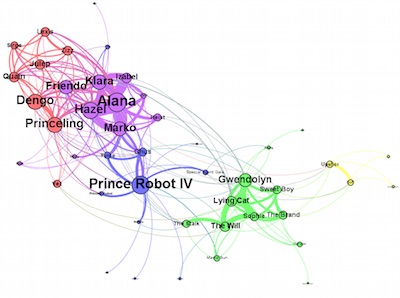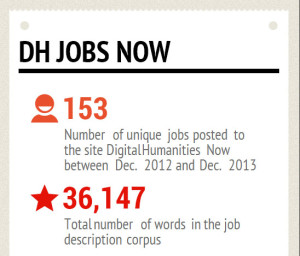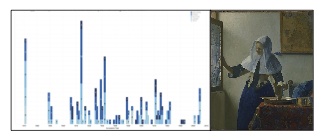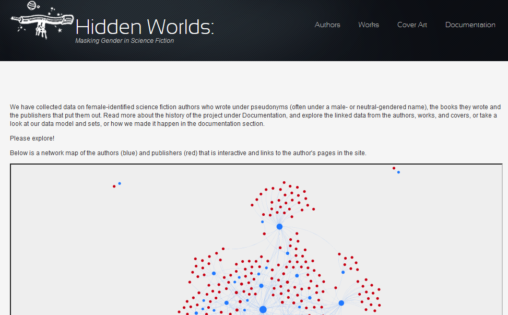Tag: digital humanitiesPage 2 of 3
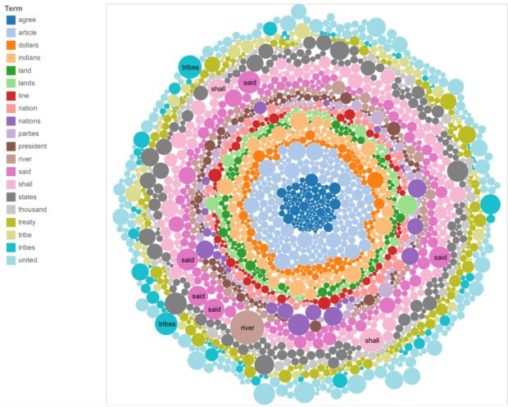
Treaties are living documents that link Native American Nations with the Federal Government of the United States, and their multifaceted conditions continue to raise numerous questions in our post colonial age. A combination of multiple word frequencies attempt to provide further insight in treaties with 142 Native American Nations.
This study aims to shed light on conversations of surveillance over the past 40 years of American discourse, using a corpus of Congressional records, mainstream and independent news sources, movie scrips and reviews, and archival materials. By comparing general and specific sentiment measurement across these various sources, we examine points of similarity and difference in attitude across the present and past, cultural and countercultural, institutional and popular with regard to surveillance—watching surveillance, as it were, through assemblages of text and data.
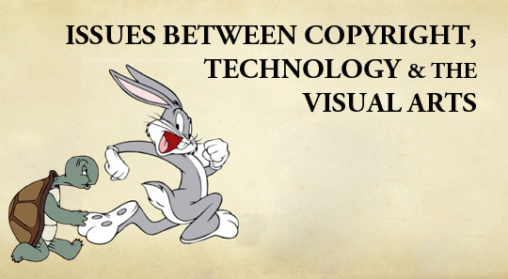
In this digital era, the US Copyright office is not keeping up with technological development, which is keeping it from protecting the copyright of artists. They are the tortoise to technology’s hare, who keeps moving the finish line further ahead on the track. As technology alters our society and how we define visual art, how will visual artists control their copyright?
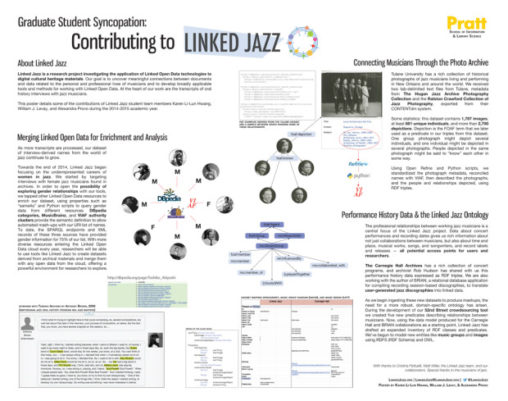
This poster highlights our research as student members of the Linked Jazz project, an ongoing exploration in applying Linked Open Data (LOD) technologies to cultural heritage materials. Research directions include the use of LOD for dataset enrichment in digital humanities research; creating RDF triples to describe image resource types; and mapping elements from various music and jazz databases to assign entities and properties from ontologies.
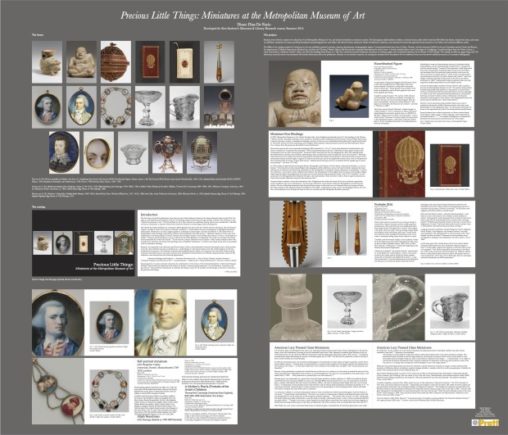
Research project and exhibition catalog utilizing collections at the Metropolitan Museum of Art. 12 objects selected (including 2 rare books!) from different departments, miniatures as precious objects researched and explained, a catalog designed in InDesign, end product: digital book. Cited 175 annotated references, included descriptions for 17 items.
Mobile digital information resources based in special collections! A WordPress-based pathfinder to the history of the American Revolution in New York City (1776-1783), exploring locations in Brooklyn, Manhattan, Staten Island, Queens, etc., and utilizing resources from NYPL special and digital collections. I also created a Google map of important sites.
For a project to archive and digitize audiocassette tapes for the Center for Puerto Rican Studies (Centro), our team took on all aspects of metadata management – from schema/nomenclature creation to digital transfers to project oversight (creating protocols, assigning data entry to classmates) and quality control. We used DublinCore and PBCore, decoded labeling mysteries, and supervised creation and management for over 70 records.
Panel discussion exploring the current methodologies regarding the documentation, description, and management of artist records and their works of art in three distinct professional environments– working with a living artist, working in a foundation, and working in a museum setting.
The idea that writing transmutes our spatial thinking towards progress has been apparent in the skill and pride of scholarly author’s material. In this project, I challenge the cultural operating system of erudition strictly from a written narrative. As we read, we are engineering a deictic shift experiencing a connection to an author’s mental maps, nonetheless how accurate is our spatial analysis? What if a classroom used GIS as a forum for discussion, a place where our mental maps and background knowledge met. I simply ask the question, can GIS produce alternated realities to evoke inquiry altering our predispositions on a topic?
For this project, we wrote Python scripts to manipulate data from the Spanish Artists Dictionary, a research resource created by the Frick Art Reference Library. The first portion focused on distilling and organizing data in order to create visualizations using Tableau Public, while the second portion involved using Python to clean and enrich the dataset by matching names against an authority list of subject headings. This presentation will outline the two parts of the project and explain how Python was applied to a cultural heritage dataset.
This project centered on the creation of a linked-data friendly JSON-LD schema for storage and retrieval of cemetery records. I used python scripts to query a crowd-sourced database (BillionGraves.com), normalize the data and ingest it in the JSON-LD schema.
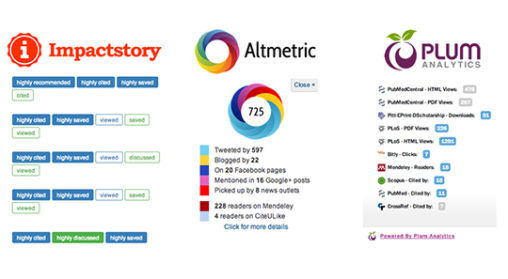
I will be presenting my academic blog post on the emergence of altmetrics as an alternative to traditional journal impact factor ((http://bit.ly/1O46zd5). I’ll address the arguments both for and against altmetrics and discuss my brief examination of the impact of one scholar’s research via traditional citation metrics versus via altmetrics.
The New York Public Library’s Map Warper is an open-source program for integrating scanned copies of historical maps from the NYPL’s collections with digital maps. Our tutorial, selected…
